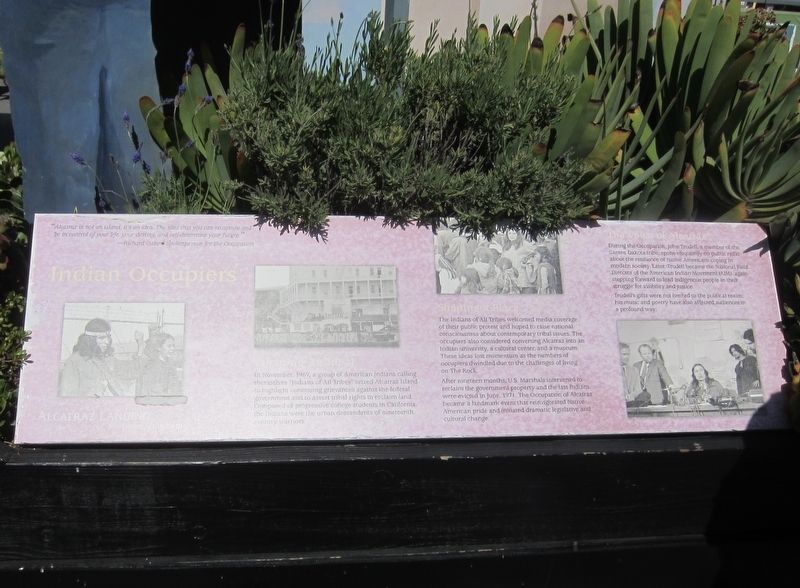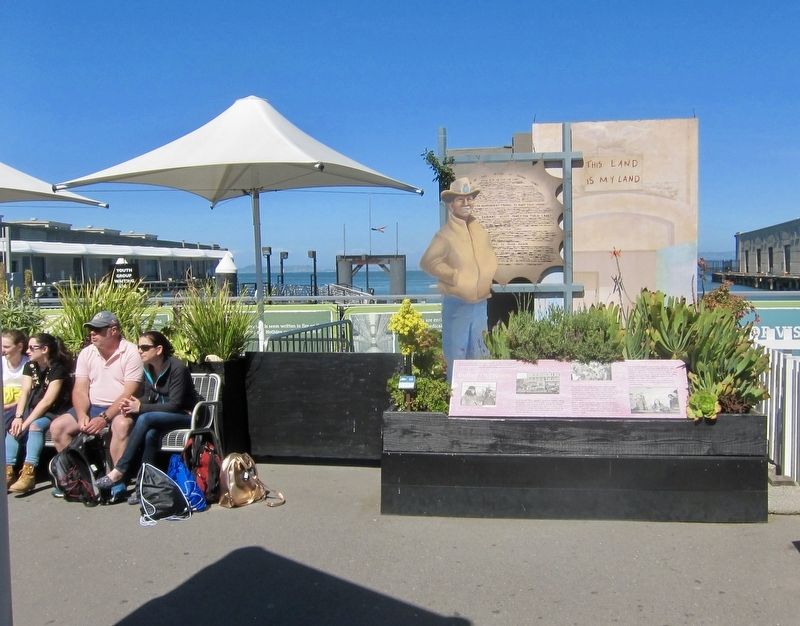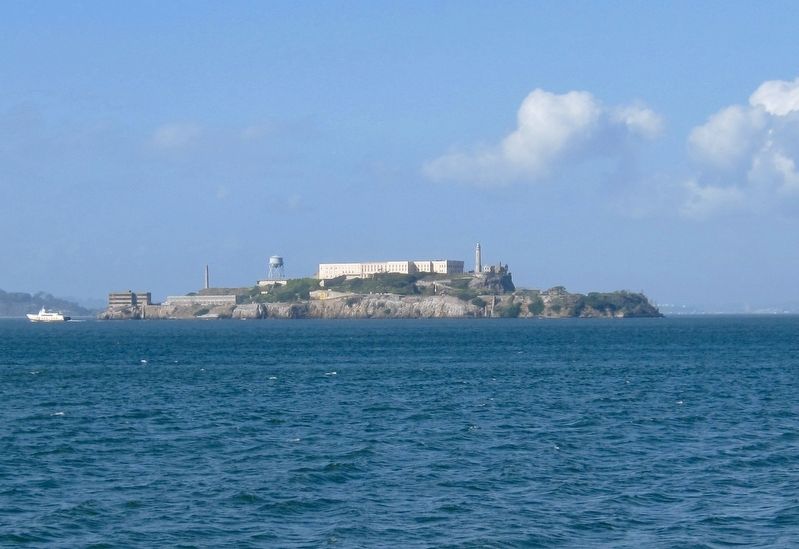Indian Occupiers
This Land is My Land
-- Richard Oakes, Spokesperson for the Occupation
In November, 1969, a group of American Indians calling themselves "Indians of All Tribes" seized Alcatraz Island to highlight continuing grievances against the federal government and to assert tribal rights to reclaim land. Cornposed of progressive college students in California, the Indians were the urban descendents of nineteenth century warriors.
Shaping a Place
The Indians of All Tribes welcomed media coverage of their public protest and hoped to raise national consciousness about contemporary tribal issues. The occupiers also considered converting Alcatraz into an Indian University, a cultural center, and a museum. These ideas lost momentum as the numbers of occupiers dwindled due to the challenges of living on The Rock.
After nineteen months. U.S. Marshals intervened to reclaim the government property and the last Indians were evicted in June, 1971. The Occupation of Alcatraz became a landmark event that reinvigorated Native American pride and initiated dramatic legislative and cultural change.
The Voice of Alcatraz
During
the Occupation, John Trudell, a member of the Santee Dakota tribe, spoke eloquently on public radio about the resilience of Native Americans coping in modern society. Later, Trudell became the National Field Director of the American Indian Movement (AIM), again stepping forward to lead indigenous people in their struggle for visibility and justice.
Trudell's gifts were not limited to the political realm: his music and poetry have also affected audiences in a profound way.
Topics. This historical marker is listed in this topic list: Native Americans. A significant historical date for this entry is November 9, 1969.
Location. 37° 48.398′ N, 122° 24.255′ W. Marker is in San Francisco, California, in San Francisco City and County. It is in Embarcadero. Marker is on Pier 33 north of The Embarcadero. Touch for map. Marker is in this post office area: San Francisco CA 94133, United States of America. Touch for directions.
Other nearby markers. At least 8 other markers are within walking distance of this marker. The 10-Inch Rodman (here, next to this marker); Alcatraz Firepower (here, next to this marker); Alcatraz Fire Power (a few steps from this marker); Correctional Officers (a few steps from this marker); Military Schoolhouse (a few steps from this marker); Industrial Buildings (a few steps from this marker); The Post Exchange & Officers' Club (a few
More about this marker. The marker is located at the passenger waiting area on Pier 33 (the launch point for the ferry to Alcatraz).
Also see . . .
1. Indians on Alcatraz : First Anniversary (American Archive of Public Broadcasting, 35 min.). "The program is the one-year anniversary of the Native American occupation of Alcatraz on November 20, 1969. The program opens with Denny Smithson speaking to two Native Americans on the boat going to Alcatraz Island. The guests speak about the conditions of the occupation and the press surrounding the occupation. This is followed by an interview with John Trudell, chief spokesman for Alcatraz island, conducted by Denny Smithson as they sit on a retaining wall in the upper courtyard of the island. This includes a discussion about the treatment of Native Americans by the federal government including their access to land and religious practices. This is followed by a press conference with John Trudell and LaNada Means reflecting on Native American treatment and protest, including plans for the new cultural center Native Americans proposed to build on Alcatraz Island." (Submitted on April 17, 2018.)
2. Occupation of Alcatraz (Wikipedia). "The Occupation of Alcatraz was an occupation of Alcatraz Island by 89 American Indians who called themselves Indians of All Tribes (IOAT). According to the IOAT, under the Treaty of Fort Laramie (1868) between the U.S. and the Lakota, all retired, abandoned or out-of-use federal land was returned to the Native people who once occupied it. Since Alcatraz penitentiary had been closed on March 21, 1963, and the island had been declared surplus federal property in 1964, a number of Red Power activists felt the island qualified for a reclamation....The Alcatraz Occupation lasted for nineteen months, from November 20, 1969, to June 11, 1971, and was forcibly ended by the U.S. government. The Occupation of Alcatraz had a direct effect on federal Indian policy and, with its visible results, established a precedent for Indian activism." (Submitted on April 17, 2018.)
3. We Hold the Rock: The Alcatraz Indian Occupation (National Park Service). (Submitted on April 17, 2018.)
Credits. This page was last revised on February 7, 2023. It was originally submitted on April 17, 2018, by Andrew Ruppenstein of Lamorinda, California. This page has been viewed 222 times since then and 10 times this year. Photos: 1, 2, 3. submitted on April 17, 2018, by Andrew Ruppenstein of Lamorinda, California.


